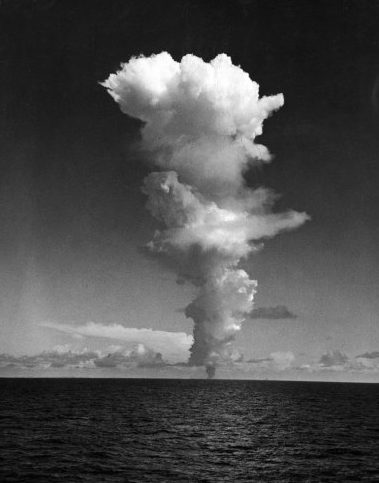Onwards to America
The following two stories on immigration share common roots.
In the summer of 1935, thirteen-year-old Moo Thick Soo Hoo boarded a Canadian ship which departed from Shanghai for a one month voyage bound for Boston. He travelled by himself as he was sent by his parents to start a life in the United States on his own. This was a terrifying experience for Moo Thick as he was traveling alone and did not speak a word of English. However, his situation worsened once he disembarked and faced immigration officials. He had prepared for the interview questions from the officials. Moo Thick knew that if he didn’t pass the interview questions he could be sent back to China. Ironically, he did so well that the officers were suspicious that he was a fraud so he was held in detention for thirty days until his father employed a lawyer to get him released. So began a life filled with even more challenges, excitement and eventually success.
At the age of 19 he enlisted in the U.S. Navy and was assigned the lowest rank of apprentice seamen. Moo knew that if he was to have a successful life here he needed to move up the ranks. He worked tirelessly to succeed and began to climb the ranks. This was quite a challenge for a young “Fresh Off The Boat” Chinese man who did not speak English too well and where racism was part of normal life. Constantly called names such as “chink” and “ching chong,” he learned to ignore the prejudiced judgments toward him as well as the racist jokes and remarks. When Moo was about 25 he decided he needed to make some changes in his life and changed his name to Butch.
Living with racism was only a small part of the challenge of Navy life. Butch became a photographer in the Navy and he took numerous photographs of combat, but his real expertise lay in documenting various bombing missions during World War II. He took on many dangerous missions both by sea and air. He faced great danger in photographing atomic bomb missions that the U.S. Armed Forces wanted for their research on the type of collateral damage these bombs inflicted.
One of the most famous photographs Butch ever took was of the H-bomb test that took place in the Bikini Atoll in the Pacific. Those photos were later published in Life Magazine, but were incorrectly attributed to a well known esteemed photographer of the time called Fritz Goro. Fritz was assigned the task of photographing the H-bomb test, but was too afraid so Butch ended up shooting the whole event and his film was handed over to Fritz and Life Magazine who then published them without giving Butch any credit, http://timelifeblog.files.wordpress.com/2012/10/01_00675751.jpg?w=386.
Butch’s career in the Navy lasted thirty years and he retired at 49 years of age. Through his life he accomplished things no other man had ever done. Even today Butch is the only Chinese man ever to graduate through all fifteen ranks of the military in the Navy, from apprentice seaman to various low officer ranks and eventually retiring as Lieutenant Commander. He went on to even greater accomplishments and is still a very active man at the ripe age of 92. In a recent publication by J. R. Harrison on the Allied Service Personnel from 1941-1945, there was a section written on Butch’s Naval experiences and it ends with the following quote:
“When Moo’s life journey ends, he will join that pantheon of patriots in Arlington National cemetery where his wife Nancy is interred.” (2011:252)
Butch is indeed a unique man with a unique life and I am so proud to call this man my grandfather.
Written By: Maeve Black
Making the transition from kindergarten to first grade is already frightening enough for a six year-old. When you combine that with having to travel thousands of miles away from home and learning a different language, you have the story of my mother, Nancy. When Nancy’s family left Hong Kong, she was only six years old. She describes her feelings as very “mixed” at the time. Only six, Nancy couldn’t quite comprehend what it meant to be leaving home. Sure, she was excited to be seeing all her uncles and aunts in the U.S. again, and the going away parties were great, but leaving the only home and school she knew was of course very daunting. Before leaving Hong Kong, her parents had continuous parties, inviting all their friends. “There was a lot of hugging and laughter, friends brought food and they played mahjong all night. So it seemed a rather festive atmosphere,” yet she knew they were packing their things, and selling larger items that they couldn’t take with them.
At the airport, her parents’ close friends, and relatives came to see them off. She and her five siblings were all bundled in layers and warm coats since it was very cold in Seattle in February. But it wasn’t cold at the Hong Kong airport, and they were boiling in their coats. Having never been to the airport or flown on an airplane before, my mother was a little more than nervous. She recalls, “I remember it was a PanAm flight. The stewardess spoke English and the only person with enough English proficiency was my oldest sister, Marion. She was 10 years old and translated for us throughout the flight. I don’t remember the flight very much. I just remember Marion ordered Coca Cola’s for all of us.”
One may think that the transition from one large city, Hong Kong, to another, Seattle, would not be very drastic; however, this was not the case. “The first impression I had of America was that it was cold and grey. There was a little bit of snow on the ground (it doesn’t snow much in Seattle), but it was very cold compared to Hong Kong. On the drive from the airport to our house, I remember lots and lots of houses, spread apart with yards. We didn’t have those in Hong Kong.”
Attending a new school proved to be another challenge. For a young girl, it was devastating feeling embarrassed all the time about the way you’re dressed and not being able to speak English. She remembers, “feeling angry that she can’t understand what’s going on, that the other girls at school are probably saying things about her and laughing about her.” However, with some perseverance these problems worked themselves out. One strategy Nancy had was to, “try and find my sisters during recess (if they had recess at the same time). At least they would look out for me. Also, Sandra was big and strong and she soon started playing ball at recess. I would just stick with her even though I was a lot smaller and scrawny.” By third or fourth grade, it all evened out, and all the extra tutoring in English paid off, “I won the spelling contest in third grade (I got a prize, that’s why I remember it), and I was tied in contests with the smartest kids in math in fourth grade.”
My mom went on to become the first student from her high school to attend Harvard University. When she asked her parents why they decided to leave Hong Kong for the U.S., her father answered that there was no way that they could have afford to pay for an education for 6 kids. To this day, my mom believes that an education is one of the most important things in life, and a crucial step for success.
Written By: Maia So-Holloway
These two stories of immigration are clearly different. However, they both share common roots in hardship, mental stamina, and success. In the two stories, we see a struggle with racism and a language barrier. Even so, their hunger for success, determination and ambition in their eyes, ignited the flame from within to overcome any obstacle.






